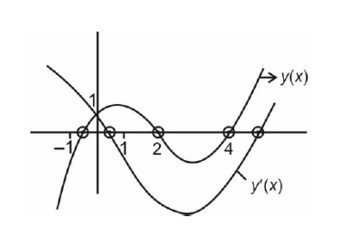Applications of Derivatives
Get insights from 16 questions on Applications of Derivatives, answered by students, alumni, and experts. You may also ask and answer any question you like about Applications of Derivatives
Follow Ask QuestionQuestions
Discussions
Active Users
Followers
New answer posted
2 months agoContributor-Level 10
y = x3
Equation of tangent y – t3 = 3t2 (x – t)
Let again meet the curve at
=> t1 = -2t
Required ordinate =
New answer posted
2 months agoContributor-Level 10
f (x) = x? /20 - x? /12 + 5
f' (x) = x? /4 - x³/3 = x³ (x/4 - 1/3)
Local maxima at 0, Local minima at 4/3
f' (x) = x³ - x² = x² (x-1)
x = 1 point of inflection
New answer posted
2 months agoContributor-Level 10
y = (3/2)sin (2θ)
x = e^θ sinθ
dy/dθ = 3cos (2θ)
dx/dθ = e^θ (cosθ + sinθ)
dy/dx = (3cos (2θ) / (e^θ (cosθ + sinθ) = (3 (cosθ - sinθ) / e^θ
New answer posted
2 months agoContributor-Level 9
f (x) = (4a - 3) (x + ln5) + 2 (a - 7)cot (x/2)sin² (x/2)
= (4a - 3) (x + ln5) + (a - 7)sin (x)
f' (x) = (4a - 3) + (a - 7)cos (x)
For critical points f' (x) = 0
cos (x) = - (4a - 3) / (a - 7) = (3 - 4a) / (a - 7)
⇒ -1 ≤ (3 - 4a) / (a - 7) ≤ 1
Solving this inequality leads to:
⇒ a ∈ [4/3, 2]
Related Tags
New question posted
2 months agoTaking an Exam? Selecting a College?
Get authentic answers from experts, students and alumni that you won't find anywhere else
Sign Up on ShikshaOn Shiksha, get access to
- 65k Colleges
- 1.2k Exams
- 679k Reviews
- 1800k Answers

